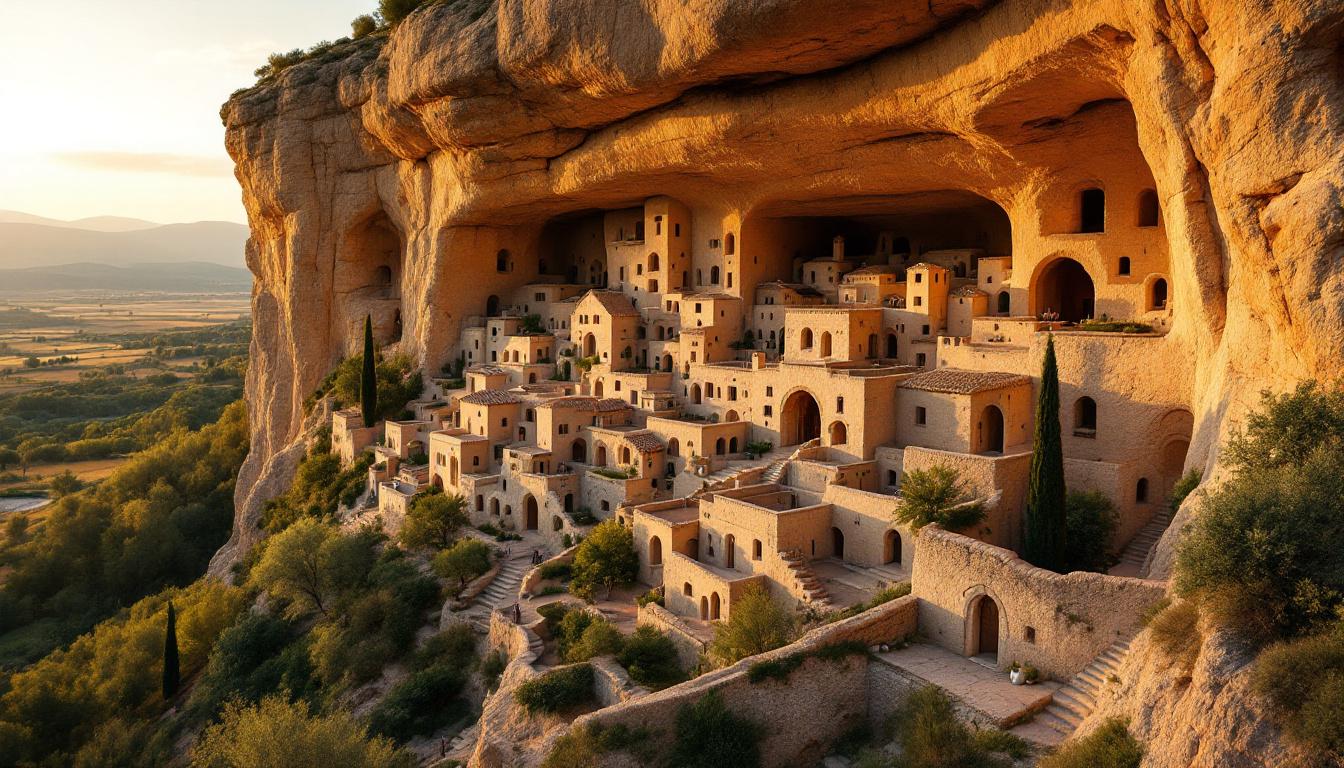Most travelers rushing through Provence miss the most extraordinary geological discovery hiding in plain sight. While millions flock to lavender fields and vineyard tours, this limestone fortress village of just 262 residents quietly harbors the birthplace of aluminum itself.
Perched on a dramatic rocky outcrop measuring 700 meters long and 200 meters wide, Les Baux-de-Provence defies every expectation of what a tiny French village should be. Despite its minuscule population, it welcomes 1.5 million visitors annually who come to witness where modern industry was born from medieval stone.
The locals call their home “le rocher des Baux” – the rock of Les Baux – and they’re not exaggerating. This isn’t just another pretty Provençal village; it’s a geological time capsule that changed the world.
The discovery that revolutionized modern life
When medieval quarries revealed industrial treasure
In 1821, geologist Pierre Berthier was examining the red-tinged limestone quarries that medieval builders had carved for centuries. What he discovered in these ancient excavations was bauxite – the primary ore for aluminum production. The mineral literally takes its name from this tiny village, making Les Baux-de-Provence the etymological birthplace of the aluminum age.
The geological marvel hiding beneath your feet
The village sits atop fine-grained limestone formed from ancient marine sediments, containing fossilized sea creatures from when this area lay beneath prehistoric waters. This same stone that medieval craftsmen quarried to build their fortress walls contained the industrial revolution’s most valuable lightweight metal, hidden in plain sight for over 800 years.
Medieval fortress meets troglodyte village
Castle ruins with working siege engines
The Château des Baux showcases fully reconstructed medieval siege weapons – trebuchets and battering rams that actually demonstrate how warfare once thundered across these limestone cliffs. Unlike sanitized museum displays, these machines launch projectiles just as they did when this fortress controlled 79 surrounding towns during its medieval heyday.
Homes carved directly into living rock
Throughout the village, troglodyte dwellings emerge directly from the limestone cliff faces, their rooms hollowed from the same stone that would later yield aluminum ore. These aren’t tourist attractions – they’re working spaces where local artisans continue centuries-old Provençal crafts, their workshops literally carved into the geological foundation of modern industry.
The intimate scale that defies logic
Population smaller than a city block
With just 262 permanent residents spread across this rocky outcrop, Les Baux has fewer inhabitants than most apartment buildings. Yet this tiny community maintains a Michelin-starred restaurant, L’Oustau de Baumanière, and supports dozens of artisan workshops that have operated in these stone-carved spaces for generations.
Village dimensions that fit in your neighborhood
The entire historic village core measures less than 200 meters wide, meaning you can walk from one edge to the other in under three minutes. This compressed medieval landscape creates an intimacy impossible in larger destinations – every cobblestone path, every carved doorway, every limestone arch carries centuries of concentrated history.
Local secrets the Baussenques protect
Morning light reveals hidden quarry chambers
The residents, known as Baussenques (pronounced “boh-senks”), recommend arriving at sunrise when golden light penetrates the ancient quarry chambers where Berthier made his world-changing discovery. These early hours offer solitude among the geological formations before tour groups arrive, allowing intimate connection with both medieval craftsmanship and industrial history.
The protected artisan workshops time forgot
As part of Les Plus Beaux Villages de France, strict preservation laws maintain authentic medieval atmosphere while supporting living crafts traditions. Local stone carvers, pottery makers, and olive oil producers work in the same troglodyte chambers their predecessors carved centuries ago, their techniques unchanged since before aluminum transformed global industry.
This tiny village proves that the most profound discoveries often hide in the most intimate places. Where 262 residents guard both medieval heritage and industrial legacy, Les Baux-de-Provence offers something no large destination can match – the authentic scale where human history and geological wonder intersect.
Visit during early morning hours when the Baussenques begin their daily routines, support the local artisan workshops that maintain centuries-old traditions, and discover why this limestone fortress village represents both France’s medieval past and aluminum’s industrial future.
